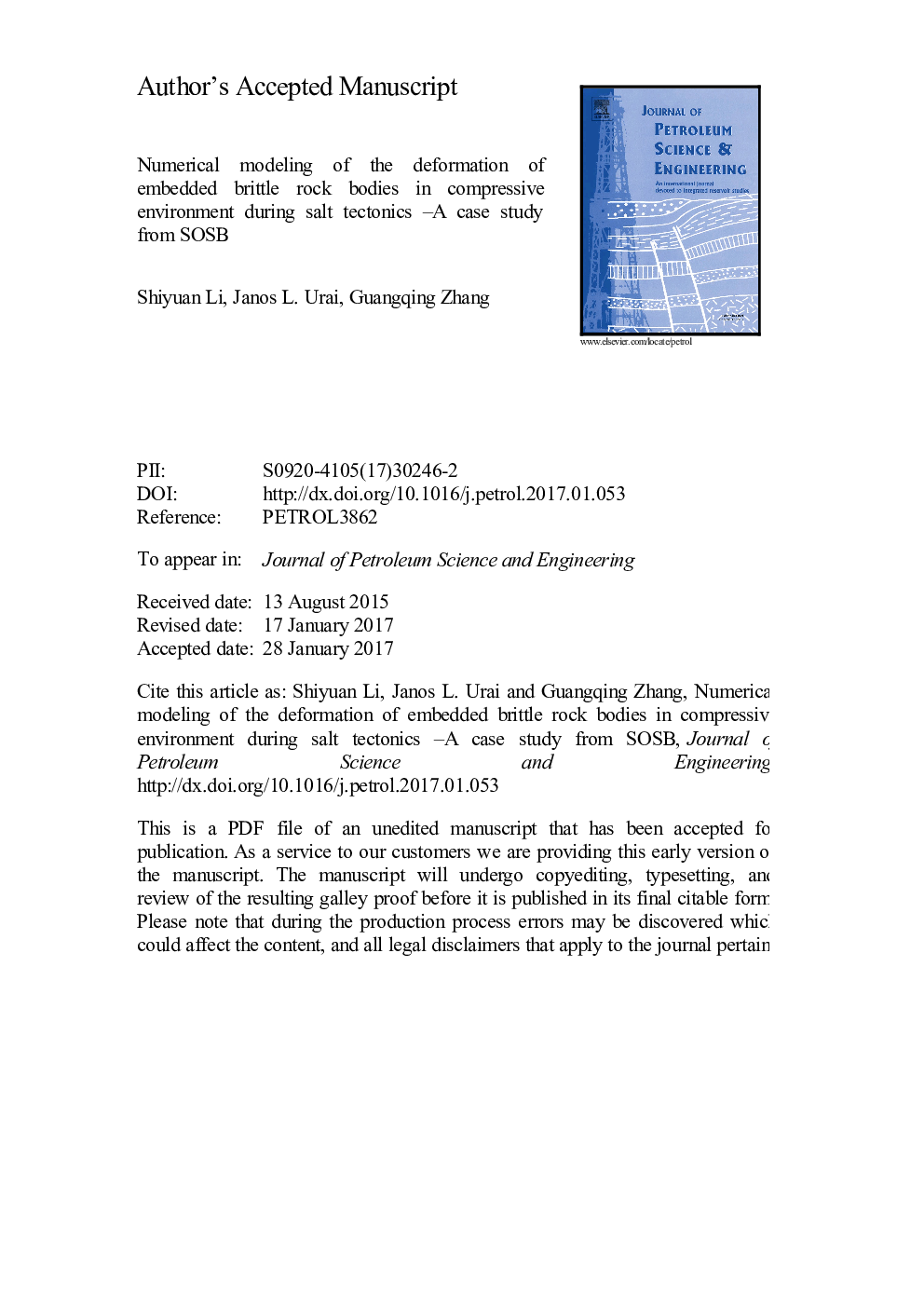| Article ID | Journal | Published Year | Pages | File Type |
|---|---|---|---|---|
| 5484251 | Journal of Petroleum Science and Engineering | 2017 | 27 Pages |
Abstract
Large rock inclusions (called stringers) such as carbonate or anhydrite blocks are embedded in many salt bodies. The observation from seismic data shows different ways of movement and deformation of the inclusions, including displacement, folding and fracturing. There remains much unknown about the deformation process of embedded inclusions in a compressive environment during salt tectonics. In this research, we investigate how the differential displacement of the top salt surfaced caused by downbuilding process leads to the deformation of brittle stringers located in-between two sediment pods in a compressive environment by an interative procedure with adaptive remeshing technique to detect and simulate fracture, overtrusting, folding deformation in a finite element model which is established as the generic model from the observations from South Oman Salt Basin (SOSB). The model shows that the compressive environment induces different deformation ways such as shear failure, folding and thrusting of stringers and the stringers can break soon after the onset of salt tectonics. The orientation of the possible shear failure plane (first break) determines the final complex deformation pattern. The initial depth and position of stringer (parallel or horizontal location) strongly influences the time and frequency of breaks.
Related Topics
Physical Sciences and Engineering
Earth and Planetary Sciences
Economic Geology
Authors
Shiyuan Li, Janos L. Urai, Guangqing Zhang,
